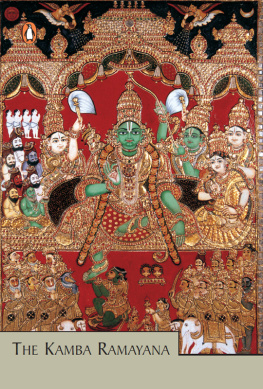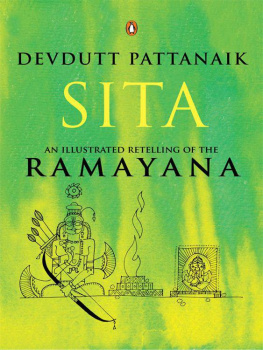Published by:

F-2/16, Ansari Road, Daryaganj, New Delhi-110002
 011-23240026, 011-23240027 Fax: 011-23240028
011-23240026, 011-23240027 Fax: 011-23240028
Email:
Regional Office : Hydrabad
5-1-707/1, Brij Bhawan (Beside Central Bank of India Lane)
Bank Street, Koti, Hyderabad - 500 095
 040-24737290
040-24737290
Email:
Branch Office : Mumbai
Jaywant Industrial Estate, 1st Floor - 108, Tardeo Road
Opposite Sobo Central Mall, Mumbai - 400 034
 022-23510736
022-23510736
Email:
Follow us on: 



Copyright:
ISBN 978-935-05733-4-1
DISCLAIMER
While every attempt has been made to provide accurate and timely information in this book, neither the author nor the publisher assumes any responsibility for errors, unintended omissions or commissions detected therein. The author and publisher make no representation or warranty with respect to the comprehensiveness or completeness of the contents provided.
All matters included have been simplified under professional guidance for general information only without any warranty for applicability on an individual. Any mention of an organization or a website in the book by way of citation or as a source of additional information doesn't imply the endorsement of the content either by the author or the publisher. It is possible that websites cited may have changed or removed between the time of editing and publishing the book.
Results from using the expert opinion in this book will be totally dependent on individual circumstances and factors beyond the control of the author and the publisher.
It makes sense to elicit advice from well informed sources before implementing the ideas given in the book. The reader assumes full responsibility for the consequences arising out from reading this book. For proper guidance, it is advisable to read the book under the watchful eyes of parents/guardian. The purchaser of this book assumes all responsibility for the use of given materials and information. The copyright of the entire content of this book rests with the author/publisher. Any infringement/ transmission of the cover design, text or illustrations, in any form, by any means, by any entity will invite legal action and be responsible for consequences thereon.
Contents

Publishers Note

The original Ramayana was a 24,000 couplet-long epic poem attributed to the Sanskrit poet Valmiki. Oral versions of the Ramayana circulated for centuries, and the epic was probably first written down sometime around the start of the Common Era. It has since been told, retold, translated and transcreated throughout South and Southeast Asia, and the Ramayana continues to be performed in dance, drama, puppet shows, songs and movies all across Asia and the world alike.
The Ramayana furnishes the ideals and wisdom of common life. From childhood most Indians learn the characters Rama, Sita, Lakshmana, Hanuman, Ravana, Dasaratha and others and incidents of this great epic. The epic helps to bind together people of India, transcending caste, distance and language.
Throughout the centuries, countless versions of the Ramayana have been produced in numerous formats and languages for readers of all ages. But previous English versions have been either too short to capture the magnitude of the original or too bulky to finish in one sitting. In this special version of Ramayana, author Seema Gupta has rendered the tale in lyrical prose that conveys all the beauty and excitement of the original, while making this spiritual and literary classic accessible to a new generation of readers, specially for the teenagers. With amazing and captivating illustrations this masterpiece surely will satisfy your intellectual and visual thirst for knowledge.
Dedication

Dedicated to my twin sons Amit and Arpit
for being the light of my life
Foreword

The Ramayana is the great saga of Lord Rama who is better known as Maryada Purushottam. The Ramayana is one of the two great epics of the Hindus, the other being the Mahabharata. Rama, the hero of the Ramayana, is a popular deity worshiped by the Hindus. The Ramayana is held in such reverence that the mere reading or hearing of it is believed to free us from sin and grant us every desire. According to the Hindu tradition, Rama is an incarnation (avatar), of god Vishnu, who is part of the Hindu Trinity. The main purpose of this incarnation is to demonstrate the righteous path (dharma) for life on earth.
The Ramayana is not just a story of four brothers: Rama, Lakshmana, Bharata, and Shatrughana, it talks about human values and family values in a subtle way. In today's world when these values are degenerating, the Ramayana revives them. In the spell of darkness looming large around us, the Ramayana acts as a guiding light showing us the path to enlightenment. Human relationships, their intricacies, and their balance is gently maintained in the Ramayana.
Ramayana revolves around the life of Rama who is a man of great virtues. His virtues survive all adversities that befall him. Today when every other person is obsessed with their own welfare, portrayal of Rama's character marks personal integrity, respect for previous generation, and love for the people.
The essence of the Ramayana is summed up as the victory of good over evil, and virtue over vice. The winning streak of humans combined with true meaning of duty and sacrifice, happiness and sorrow, devotion and selfless service offer valuable lessons on life at large. The pearls of wisdom strung into a beautiful and coherent compendium on every aspect of the ideals of life and living is the Ramayana.
The Ramayana is not just an ordinary story. It contains the teachings of ancient Hindu sages and presents them through allegory in narrative and the interspersion of the philosophical and the devotional thoughts. The characters of Rama, Sita, Lakshmana, Bharata, Hanuman, and Ravana are all fundamental to the cultural consciousness of India.
Introduction to Ramayana














 011-23240026, 011-23240027 Fax: 011-23240028
011-23240026, 011-23240027 Fax: 011-23240028




